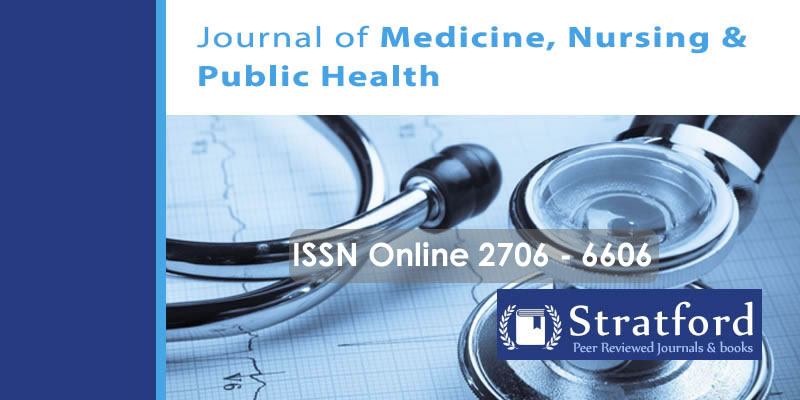Substance Abuse in Maryland, United States of America
Abstract
Addiction is a major concern around the globe as it affects millions of people. Additionally, substance abuse affects not only the addict but also their families, their communities, and everyone around them, meaning that it affects which makes addressing the problem essential. This paper outlines the substance abuse in Maryland, United States of America. Maryland has one of the worst drug epidemics in the United States. Since 1999, the state of Maryland has consistently had a death rate higher than the national average. An opioid epidemic was declared in 2017 in the he United States of America and 2,282 of the people who died from drug and alcohol abuse in the nation was from Maryland. Those deaths included people who died as a result of drug accidents caused by drug overdose. The number of heroin addictions in Maryland have consistently increased since the 1990s while the rate of alcohol addiction has decreased. To meet the needs of these populations, various programs and services have been developed and implemented in order to treat and manage substance use disorders.
Keywords: Substance Abuse, Maryland, United States of America.
References
Alderks, C. E. (2017). Trends in the use of methadone, buprenorphine, and extended-release naltrexone at substance abuse treatment facilities: 2003-2015 (update). The CBHSQ report.
Bernstein, S. L., & D’Onofrio, G. (2017). Screening, treatment initiation, and referral for substance use disorders. Addiction science & clinical practice, 12(1), 1-4.
Dezman, Z. D., Felemban, W., Bontempo, L. J., & Wish, E. D. (2020). Evidence of fentanyl use is common and frequently missed in a cross-sectional study of emergency department patients in Baltimore, Maryland. Clinical Toxicology, 58(1), 59-61.
Hale, J. V., Feyh, A. S., Weaver, A., Murray, J., Denning, D. A., & Amiri, F. (2020). The Effect of Substance Abuse Programs on Positive Drug Screening Tests in Trauma Patients. The American Surgeon, 86(12), 1717-1720.
Latkin, C. A., Edwards, C., Davey-Rothwell, M. A., & Tobin, K. E. (2017). The relationship between social desirability bias and self-reports of health, substance use, and social network factors among urban substance users in Baltimore, Maryland. Addictive Behaviors, 73, 133-136.
Latkin, C. A., Edwards, C., Davey-Rothwell, M. A., Yang, C., & Tobin, K. E. (2018). The relationship between drug use settings, roles in the drug economy, and witnessing a drug overdose in Baltimore, Maryland. Substance Abuse, 39(3), 384-389.
Lipari R.N., & Van Horn, S.L. (2017). Trends in Substance Use Disorders among Adults Aged 18 or Older. The CBHSQ report: Substance Abuse and Mental Health Services Administration (US)
Lo, T.W.; Yeung, J.W.K.; Tam, C.H.L. (2020). Substance Abuse and Public Health: A Multilevel Perspective and Multiple Responses. Int. J. Environ. Res. Public Health, 17, 2610. https://doi.org/10.3390/ijerph17072610
McHugh, R. K., Votaw, V. R., Sugarman, D. E., & Greenfield, S. F. (2018). Sex and gender differences in substance use disorders. Clinical Psychology Review, 66, 12-23.
Nam, Y. H., Shea, D. G., Shi, Y., & Moran, J. R. (2017). State prescription drug monitoring programs and fatal drug overdoses. Am J Manag Care, 23(5), 297-303.
Pardo, B., & Reuter, P. (2018). Narcotics and drug abuse: Foreshadowing of 50 years of change. Criminology & Public Policy, 17(2), 419-436.
Salakhova, V. B., Belinskaya, D. B., Erofeeva, M. A., Ulyanova, I. V., Zotova, L. E., Khammatova, R. S., & Mizonova, O. V. (2018). Modern methods of diagnosing addiction to psychoactive substances: neurophysiological aspects. Electronic journal of general medicine, 15(6).
Sherba, R. T., Coxe, K. A., Gersper, B. E., & Linley, J. V. (2018). Employment services and substance abuse treatment. Journal of substance abuse treatment, 87, 70-78.
TAXMAN, F. S., & MUN, M. (2018). The Impact of Substance Abuse on Continued Involvement in the Justice System. Drug Use in Prisoners: Epidemiology, Implications, and Policy Responses, 30.
Thylstrup, B., Schrøder, S., Fridell, M., & Hesse, M. (2017). Did you get any help? A post-hoc secondary analysis of a randomized controlled trial of psychoeducation for patients with antisocial personality disorder in outpatient substance abuse treatment programs. BMC psychiatry, 17(1), 1-10.
Zou, Z., Wang, H., Uquillas, F. D. O., Wang, X., Ding, J., & Chen, H. (2017). Definition of substance and non-substance addiction. Substance and Non-substance Addiction, 21-41.


